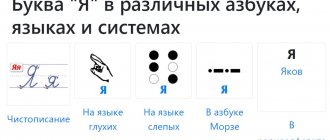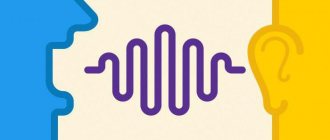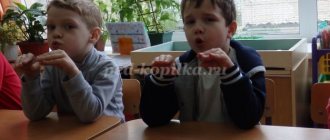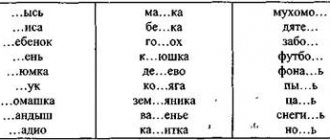In science
Differentiation in science means the separation of new disciplines from a certain scientific direction as knowledge accumulates.
This process is inseparable from scientific progress. Research within a narrow specialization allows one to gain a deeper insight into the essence of phenomena and processes.
This process is similar to a chain reaction: as information accumulates from the “mother” science, a “daughter” direction is highlighted. It develops, and with the expansion and deepening of knowledge about its object, it differentiates into several more scientific disciplines. And this can continue indefinitely.
Example: the study of the heredity of biological organisms led to the creation of a new scientific field - genetics. Then new specializations emerged from this discipline - medical genetics, molecular, biochemical. And the development of these areas, in turn, will inevitably lead to the creation of new disciplines.
Let us visually examine differentiation in science using the example of pedagogy:
*click on the picture to open it full size in a new window
The diagram shows only 3 levels of pedagogy as a science. The development and deepening of third-level knowledge will lead to the creation of differentiation at the next level.
Language differentiation
This term in linguistics implies the emergence of new varieties of language. Simply put, this is the emergence of adverbs, dialects and dialects.
Example: the Russian language exists, but in almost every “outback” it has its own peculiarities. So, in one district of the Tver region they say not “mountain”, but “gorushka”, not “go”, but “go”. And there are countless such changes in the Russian language, as, indeed, in the languages of the whole world.
There are 3 main reasons for language differentiation:
- territorial (example - in the previous paragraph);
- social – changes occur due to the differentiation of society into different social groups. An example is youth slang (remember, I wrote about what ChSV, momo and the like are);
- functional-stylistic – changes occur as a result of the introduction into everyday use of words from scientific, official business, journalistic and colloquial vocabulary. For example, “IT technologies” (scientific style); “notarial deed” (official business); “an act of unprecedented cruelty” (journalistic); “to go fishing” (colloquial style).
Subgroup speech therapy lesson for students in grades 3-4 “Differentiation of sounds C-C”
Target:to develop the ability to distinguish the sounds Ts-Ch in speech.
Tasks:
educational
- distinguishing the sounds Ch-C by ear, in syllables and words, in sentences, in text and in writing;
- clarification and comparison of articulations of the sounds Ch-Ts:
- differentiation of singular and plural nouns;
- Working with polysemantic words;
- developing word formation skills using the suffix -ichk;
- improving reading skills;
- clarification and expansion of the dictionary on the topic “Birds”.
developing
- development of phonemic hearing;
- development of skills in phonemic analysis and synthesis of words with the sounds C-C;
- development of thinking, memory, attention;
- coordination of movements and speech;
- development of general motor skills;
educational:
- increased speech activity;
- cultivating the desire to speak correctly and beautifully;
- creating a situation of success;
- nurturing love for the nature of the native land, for birds.
Equipment: pictures for reflection, a general mirror, a manual for the development of breathing “Butterflies”, individual mirrors, presentation, subject pictures “Birds”, the game “Steam Locomotive”, ball, task cards, poster with the letters C, C.
Lesson content:
I. Organizational moment.
— Hello, today we have a speech therapy lesson. Look at our guests, say hello to them, smile at them. They are friendly, and we are calm and focused. We will try to complete all tasks correctly.
You have pictures of the sun, clouds and clouds on your table.
At the end of the lesson, you will choose a picture based on your mood, based on the results of your work. If you like the lesson, you will be in a good mood, you will say to yourself “I’m great!”, show the sun, if it seems that you still need to work on the topic, you you will say to yourself, “It’s a little difficult for me,” show a white cloud, if you had difficulties, the mood is bad, show a gloomy cloud.
Introduction to the topic.
Speech therapist: What time of year is it now? That's right, spring.
What changes occur in nature in spring? Name the signs of spring. (students’ answer).
If there is any difficulty, show pictures with signs of spring.
Our tongue was also happy about spring (the tale of the cheerful Tongue - articulation gymnastics
).
The tongue is basking in the sun (the tongue is wide). The rain started dripping - The tongue ran home, shrank, slightly peeked out of the house (the tongue is narrow). A spring breeze blew (an exercise for developing breathing). The insects woke up: butterflies appeared (an exercise for developing breathing), the beetle flew: w-w-w-w. Mosquitoes appeared: z-z-z-z-z. Migratory birds have returned and are making nests (exercise “Calyx”). In the forest, they were happy with the warmth and the hares ran faster from hill to hill (exercise “Swing”). People are cleaning their houses: whitening ceilings (painter), painting fences (“Brush teeth”). The tongue is happy about spring (“Smile”).
Main part.
- Introduction to the topic
.
Working from pictures.
Rook, swallow, owl, starling, heron, tit. How to call them in one word? (wild birds).
Isolating
the common sound in words:
rook, swallow, owl. What sound was repeated in the names of birds? (H). Which bird is the odd one out here? Why?
Isolating the common sound in words: starling, heron, tit. What sound is repeated in the names of these birds? (C). Which bird is the odd one out here? Why?
2. Message
about the topic of the lesson (slide No. ).
Today in class we will distinguish the sounds CH-Ts.
The birds of Bashkortostan have flown to us, which you probably know little about, but you will definitely learn about in biology and geography lessons. These are the turtle dove and lapwing, they brought us many interesting tasks.
3.
Pronunciation of isolated sounds that differ (choral, individual).
Spring has come, migratory birds have arrived. Guys, do you know that you can’t make noise in the forest? Why? In order not to scare the birds, they build nests and hatch chicks. And you and I say: “Hush-Ch-Ch-Ch or Ts-Ts-Ts”
4. Clarification
and comparison of the articulations of the sounds Ch and Ts (with individual mirrors)
A comparison is made of [ts] and [h] by articulation with clarification of the sound composition: [ts] = [t] + [s], [h] = [t' ] + [w'].
A). Say the sound Ch while looking in the mirror. What position are the teeth in? In what position are your lips and tongue? How does the air flow? (slide).
- Place your hand on the neck and listen to whether the neck trembles when pronouncing the sound Ch (does not tremble).
b). Make the sound T while looking in the mirror. What position are the teeth in? In what position are your lips and tongue? How does the air flow? Place your hand on the neck and listen, does the neck tremble when pronouncing the sound T? (does not shake) (slide).
5.Characteristics of sounds.
(slide)
6. Correlation with letters.
(slide).
Posters with letters. 7. Development of phonemic awareness: the game “Stomp - Clap”
Hear the sounds of the activity among other sounds and stomp on the sound Ch, and clap on the sound C:
a) a, c, m, h, s, k, c, d;
b) in syllables: ap, och, yes, uts, te, tsa, dia, chi, tyu;
c) in words: crow, dove, tap dancer, woodpecker, stonechat, heron.
8. Differentiation of sounds in syllables. Game "Repetition"
Tsa-cha-cha Che-che-tse
Ots - ots - och uch - uch-uts
Reading syllables in sequence on a slide:
CRA-CHRA CTA-CTA CVE-CHWE OCC-POINTS
9. Physical school
- Birds jump and fly.
They imitate the flapping of wings with their hands and the birds jump and sing.
rotate the sides.
Tick-tweet, chirp-tweet.
The birds collect the crumbs,
peck the grains
with their fingers together, tapping on knees
Feathers cleaned, standing straight, make waves with your right hand,
Feathers cleaned,
Standing straight, make waves with your left hand
The beaks were cleaned, • Turning the head to the right - left
The beaks were cleaned
, • Turning the head to the right - left
Then we flew. Imitate the flapping of wings with their hands
10. Differentiation of sounds in words.
Game "One - many"
Speech therapist: I name one bird, but you name many:
Tit - Rook - Lapwing -
Heron – Dove – Owl – owls
Tap dancing – (explain the meaning of the word with a demonstration of images of a bird and dance)
Lentils – (explain the meaning of the word by showing pictures of birds and cereals)
Game “Name it kindly” (with throwing the ball).
Name the objects affectionately so that the sound Ch appears in the names.
Fox - fox Chicken - Bird -
Tit - Chick - Egg -
Game "Steam Locomotive"
The turtle dove and lapwing invite you to determine the place of the sounds ts or ch in the names of birds and distribute them into trailers (pictures of a heron, starling, dove, rook, swallow, siskin).
11. Differentiation of sounds in a sentence (task on cards).
Instructions: read the sentences and replace the dots with the missing letters CH or C. Don’t forget that you only need to insert the letters CH or C.
Sy..., hazel grouse...ik, blue...a are wintering birds.
Gorli...a, skvore..., gra..._ migratory birds...s.
12. Homework (on cards).
Instructions: Read the text, highlight words with the sounds CH-Ts,
Underline the letter C with a blue pencil, the letter H with a green pencil.
Birds are our friends!
In spring, birds return from warm regions: starlings, rooks, warblers, siskins, and lentils. They build nests and hatch chicks. Birds are beneficial; they eat mosquitoes, flies, caterpillars, and worms. Take care of the birds! Don't touch bird's nests!
14. Summary of the lesson. Reflection.
Our lesson has come to an end. What sounds did we reinforce during the lesson? What is the difference? (slide) Did you like the lesson, was it useful? Which tasks did you find difficult?
Choose a picture according to your mood, based on the results of your work. If you like the lesson, you will be in a good mood, you will say to yourself: “I’m great!”, show the sun, if it seems that you still need to work on the topic, you will say to yourself, “It’s a little difficult for me,” show a white cloud, if you have had difficulties, you are in a bad mood, you will show a gloomy cloud.
15. Evaluation of students’ work in class.
You were active and tried. The turtledove and lapwing say goodbye to you and say: “Well done! See you again!" (slide).
Information sources
1.https://lesson.rf/library/konspekt_zanyatiya_160537.html (physical education).
Homework.
Read the text, highlight words with the sounds Ch-Ts, underline the letter Ts with a blue pencil, the letter Ch with a green pencil.
Birds are our friends!
In spring, birds return from warm regions: starlings, rooks, warblers, siskins, and lentils. They build nests and hatch chicks. Birds are beneficial; they eat mosquitoes, flies, caterpillars, and worms. Take care of the birds! Don't touch bird's nests!
Homework.
Read the text, highlight words with the sounds Ch-Ts, underline the letter Ts with a blue pencil, the letter Ch with a green pencil.
Birds are our friends!
In spring, birds return from warm regions: starlings, rooks, warblers, siskins, and lentils. They build nests and hatch chicks. Birds are beneficial; they eat mosquitoes, flies, caterpillars, and worms. Take care of the birds! Don't touch bird's nests!
Sy..., hazel grouse...ik, blue...a are wintering birds.
Gorli...a, skvore..., gra..._ migratory birds...s.
Sy..., hazel grouse...ik, blue...a are wintering birds.
Gorli...a, skvore..., gra..._ migratory birds...s.
What can be differentiated in psychology
Differentiation in psychology means the ability of an individual to be an individual (what is this?), while remaining a socialized member of society.
A simple example: there is a person, he is socialized, that is, he adequately coexists with the other members of any group, fulfills his civic duties in relation to the state in which he lives.
But at the same time, he has his own hobbies, spiritual attachments, and his own point of view. The higher the psychological differentiation of a person at a normal level of socialization, the more stable he is psychologically, the more valuable he is as a person .
It is worth noting that excessive passion for computer “shooters” has a detrimental effect on the unformed child’s psyche.
Immersed in the virtual world, the child ceases to develop psycho-emotionally, that is, is inhibited and adequate socialization in society does not occur.
Differentiation in the economy
Let us consider this concept as a process of development in relation to different areas of human activity and the signs by which this process occurs.
Differentiation in economics is the established system of economic relations in a particular society. The concept of “society” in this context has a meaning: a separate territorial subject, i.e. a region or an entire state, or the entire world community.
Thus, within the Russian Federation there are many territorial entities whose economic activities are determined historically according to the sectoral principle.
For example, the Krasnodar Territory is an agricultural region, and the Far East is a fishing region. Within the global community: Japan is a country producing high-tech goods, and Ecuador is a global supplier of bananas and oil.
Conclusion: the basis of differentiation in the economy lies in the division of labor according to sectoral and (or) territorial characteristics.
In this case, the following factors are of fundamental importance to the level of differentiation:
- provision of labor resources;
- production volumes;
- the degree of implementation of scientific achievements in the production process;
- target orientation of production;
- factors in the socio-political sphere: the level of economic development of an economic entity,
- the degree of development of economic relations with other entities,
- legal basis.
This should not be confused with the economic aspect of social differentiation, i.e., with the division of society into layers with different income levels.
Thus, in the Russian Federation, the differentiation of incomes of the population has reached enormous values: the difference in the salaries of the ten percent of the highest paid and ten percent of the least paid workers reaches 40 times! This is almost 8 times higher than in economically developed countries.





